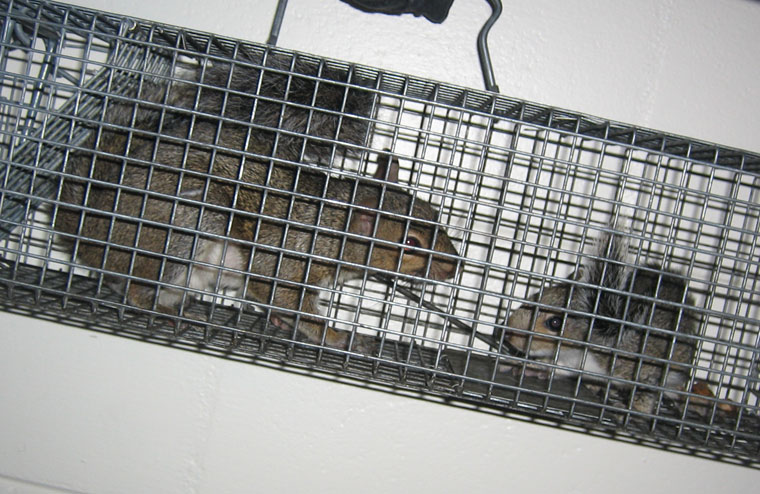- info@wildlife-removal.com
Call us for help in your town
Wildlife Removal Education
What to Do With Trapped Squirrels
Need squirrel removal in your hometown? We service over 500 USA locations! Click here to hire us in your town and check prices - updated for year 2020.
Live trapping of squirrels is actually illegal in many states across America, but we’re going to go right ahead and pretend that you didn't know that. (If that's the case for the state in which you live.)

If you HAVE already trapped a squirrel, you should know that releasing the animal is going to be quite a challenge. Firstly, you must make sure that you haven't just trapped a female squirrel. If you have, there’s a chance that you have captured a mother squirrel and that mother has babies in a nest somewhere. Squirrels can have two litters in one year if the conditions are right, so this means that spring and summer captures are likely to be a female with young in a nest.
If you have captured a female squirrel (and it appears the animal could have just given birth, usually indicative by larger nipples), you will need to locate the young before you can release the mother. If you can locate her young in a nest, you can grab them (using gloved hands) and place them in a separate cage or box. We do not recommend opening the one trap with the mother in it to shove her babies in there too. She will try to escape for sure, and she will also try to attack you — the predator who is trying to grab her babies — in the process. (Defensive wild animals are aggressive ones.)
With the entire family safely confined, it’s time to drive. And drive. And then drive some more. The further you can get away from your house or commercial building, the better, and we're talking ten to fifteen miles or more.
Squirrels are usually daytime-active, although, they don’t seem to appreciate the heat of midday sun all that much. If you release them in the early morning or late afternoon, they will have a better chance of survival.
You will need to look for an area that has plenty of trees and undergrowth. This enables the squirrel to try and find a hiding spot that she can make into a new nest, and the trees provide overhead shelter and nest potential, while the undergrowth allows her to move along the ground to find food and whatever she needs to build her nest, without becoming the victim of a predatory attack.
You should know that many relocated animals do not survive the trauma of being trapped and then released into a brand new habitat. They will need to contend with a hierarchy of animals that already exists, fighting for resources such as food and shelter. She may even come across new predators that she hadn't before. On top of all of that, she will be stressed and disorientated …
Not exactly the kind of conditions you’d be hoping for starting a new life in some new woods!
Go back to the Squirrel Removal page, or learn tips to do it yourself with my How to Get Rid of Squirrels guide.


















